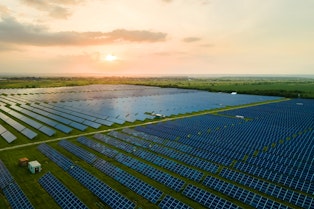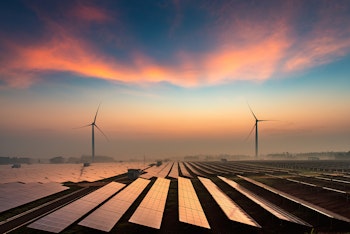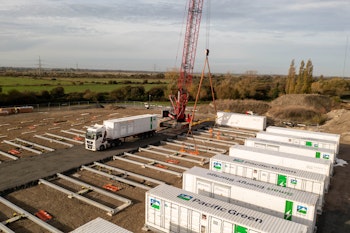By Joel Alexander
As a father, I know the importance of the local children’s park. Countless hours of enjoyment come from the right combination of swings, slides and sandpits, located in the right area, accessed by all.
This is not too dissimilar from the emerging energy park concept, which usually involves a mix of generation, storage and transmission assets feeding into the grid to power local homes, schools and businesses. And energy parks are starting to take off in Australia.
One of the earliest energy parks in the country is in Hughenden, Flinders Shire, North Queensland. Kennedy Energy Park, which combines 15 MW of solar photovoltaic (PV) and 43 MW of wind generation with 2 MW, 4 MWh of lithium-ion battery systems, had a somewhat haphazard start.
Originally hailed as a world first, it received AUD$18 million in funding from the Australian Renewable Energy Agency, as part of total estimated project costs that have been reported to be anything between $99 million and $160 million.
An initial proof-of-concept construction start date of October 2017 was pushed back to 2018. And a grid connection deadline slipped from 2018 to mid-2021, owing to delays in registration from the Australian Energy Market Operator.
Despite the delays, the Kennedy Energy Park was still the first project attached to Australia’s main grid that combined wind, solar and storage. Other energy parks are taking shape, however.
In South Australia, for example, construction has started on the $500 million Crystal Brook Energy Park, which is due to start operating in 2023 with a mix of wind, solar and 130 MW/400 MWh of battery storage.
And in Victoria there are plans for a $1.2 billion, 550 MW solar and battery-based energy park in the Gippsland region. The Gippsland Renewable Energy Park is being part-funded by the Clean Energy Finance Corporation.

There are good reasons why it makes sense to co-locate clean energy assets in this way. Whenever you build a renewable energy project, a big chunk of the cost goes on things that are not directly related to the generation infrastructure you are putting in place.
You need a grid connection for example, which in turn may require upgrades to local transmission capacity. You also will need to carry out civil engineering works on the site and install power electronics, security systems and so on.
This all adds to the bill of materials and the overall costs of the project. So, if you can put two renewable energy plants on one site, for example by co-locating PV arrays with a wind farm, you can get twice as much production capacity for an incremental increase to the balance of plant costs.
Energy storage helps to further improve the economics of the park. In many ways, the most valuable part of a renewable energy project is the grid connection, because without it you cannot export the electricity you produce.
But at nighttime your solar panels will not produce power, and when the wind drops your wind turbines will stand idle. At those times, you are not using your grid connection—unless you have energy storage.

With storage assets such as batteries you can hold onto some of the energy you get during times of plentiful solar or wind generation and sell it to the grid when prices are high, which is unfortunately becoming more common during the energy crisis.
Canny energy park developers can take advantage of this and install more generation capacity than the grid connection can hold, so there is always some production that goes to storage and can be sold later.
The benefit of storage is not just that it can allow you to carry on selling electricity when your solar panels or wind turbines are not working. It can also make sure you are able to sell your electricity when it is worth most on the market.
Imagine, for example, that electricity prices are due to go up by 20% in the evening. Under such circumstances, it makes sense to send as much solar generation as possible to your batteries and then sell it when the electricity price increases.
Energy parks with lots of energy storage could even go one further and buy electricity off the grid when it is cheap, for example at midday when the nation’s solar panels are working flat out or at the middle of the night when demand is low.
This cheap energy can then be sold back to the grid when the grid most needs it, helping to avoid grid outages. Using this logic, it stands to reason that grid-scale energy storage is going to become more valuable as the amount of renewable energy, and particularly solar, increases on the grid.
At Pacific Green we are excited about the prospects for energy parks in Australia because we are already one of the leading developers of such sites in the UK.
We have already commenced work at Richborough Energy Park in Kent, the site of a former fossil-fuel power station next to a major undersea connection to Belgium.

Richborough Energy Park is the first in a series of energy park opportunities being offered by Pacific Green Energy Storage (UK) and represents a model that could easily be transferred to Australia.
For investors, landowners and businesses with land assets, Pacific Green has the expertise to fully develop energy park projects, from origination and development to construction and operation. To find out more, speak to us now.
Publish date: 14 November, 2022